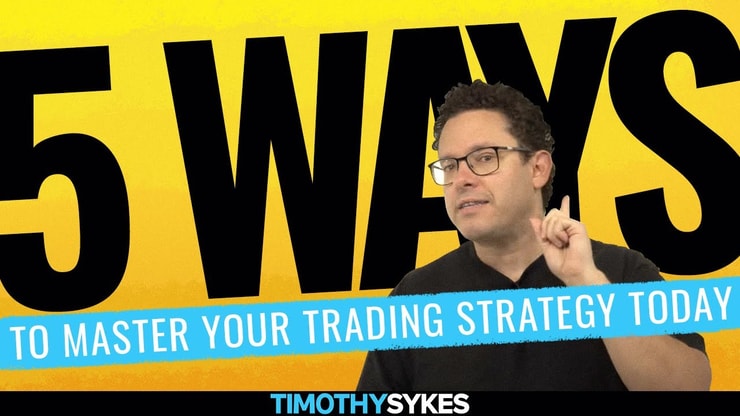If you’re wondering whether to buy NVIDIA stock, you’ve got to look at its momentum in the stock market and how its volatility aligns with your trading strategy. NVIDIA (NASDAQ: NVDA) has seen explosive growth due to its leadership in artificial intelligence (AI) and graphics processing units (GPUs), but no stock is ever “safe.” Traders need to analyze market trends, stock performance, and potential price movements to make informed decisions about entering a position.
You should read this article because it offers key insights into NVIDIA’s stock and future prospects for informed trading.
I’ll answer the following questions:
- What is NVIDIA’s current stock price and recent performance?
- What factors are influencing NVIDIA’s stock movement?
- How does NVIDIA’s valuation compare to its industry peers?
- What are analysts’ projections for NVIDIA’s future growth?
- What risks should traders consider regarding NVIDIA?
- How is NVIDIA positioned in the AI and GPU markets?
- What recent developments could impact NVIDIA’s stock?
- Is now a good time to buy, hold, or sell NVIDIA stock?
Let’s get to the content!
Table of Contents
Is NVIDIA Stock a Good Buy?
NVIDIA is a market leader in GPUs and AI chips, with applications spanning gaming, data centers, and automotive technologies. The company’s ability to maintain significant revenue and earnings growth has secured its position among the tech giants like Apple. Analysts consistently assign a high buy rating to NVDA due to its potential in AI-driven industries.
Check out the other AI stocks I’m watching here!
However, stock analysis suggests caution. While NVIDIA’s growth rate is impressive, its stock price often trades at a premium, reflecting expectations of sustained performance. Overvaluation risks exist if future growth doesn’t match current investor enthusiasm.
As a trader, your decision should factor in not just potential gains but also the possibility of heightened volatility. Many traders are tempted to chase momentum, but disciplined stock market participants know that waiting for the right opportunity can be more rewarding. Use tools like financial reports and analyst ratings to validate your investment thesis.
Traders often wonder if corporate actions like stock splits impact a company’s value or market perception. NVIDIA’s stock split history shows how such moves can make shares more accessible while stirring renewed interest among traders. The 2021 stock split reduced NVDA’s share price significantly, potentially attracting new investors. However, while a split can affect short-term price action, the company’s fundamental performance remains the real driver of its value. If you’re curious about how NVIDIA’s stock split might influence your trading strategy, this article on NVIDIA stock splits offers valuable insights.
NVIDIA Stock: Buy, Sell, or Hold?
NVIDIA stock has experienced incredible momentum, making it a favorite among growth investors. But momentum comes with challenges. The high valuation has left some questioning whether the shares are due for a pullback. Holding NVDA might be the better option for long-term investors who believe in the company’s trajectory in AI and technology sectors.
Traders with short-term horizons must be mindful of volatility. NVIDIA’s market cap has soared due to explosive growth in sales and earnings, particularly driven by demand for AI technologies. That said, high expectations can lead to sharp corrections if quarterly results or guidance miss Wall Street forecasts.
Determining whether to buy, sell, or hold NVIDIA shares depends on your trading strategy. Short-term traders might look for volatility-driven price movements, while long-term investors focus on the company’s innovation and resilience in competitive markets. So if you’re trading a stock like NVIDIA, you better be sure that your trading software is up to the task…
When it comes to trading platforms, StocksToTrade is first on my list. It’s a powerful day and swing trading platform that integrates with most major brokers. I helped to design it, which means it has all the trading indicators, news sources, and stock screening capabilities that traders like me look for in a platform.
Grab your 14-day StocksToTrade trial today — it’s only $7!
As NVIDIA stock experiences sharp price swings, understanding timing and market sentiment becomes essential. Many traders question whether a stock split signals a good entry point or if it’s better to wait for a correction. Evaluating NVIDIA’s performance post-split reveals how its valuation and growth projections align with market trends. This can guide your decision to hold onto gains or sell for profits. To explore whether buying after a stock split offers an advantage, check out this resource on buying NVIDIA after a stock split for additional clarity.
When Should You Buy NVIDIA Stock?
Timing your purchase of NVDA shares is critical. Stocks with high momentum often see sharp corrections after news reports or earnings releases. Buying into such volatility can lead to substantial gains, but it requires careful analysis of earnings growth and overall market conditions.
Waiting for a dip might allow you to enter at a more favorable stock price. NVDA’s financials and guidance provide crucial clues. Look for periods of consolidation or analyst downgrades as potential entry points. Often, fear in the market presents an opportunity for disciplined investors.
Patience is key when dealing with volatile stocks. Keep an eye on NVIDIA’s sales trends, revenue growth, and AI chip developments. Technical analysis of support and resistance levels can provide additional confirmation for your trade.
Timing the market is always challenging, especially with high-volatility stocks like NVIDIA. For those considering selling, tracking trends such as analyst downgrades or bearish market signals can help decide whether to lock in gains or reduce losses. Understanding how and when to sell NVIDIA shares requires balancing short-term volatility with long-term growth potential. For a thoughtful guide to assessing whether selling is the right move for you, visit this analysis on selling NVIDIA stock.
How Much NVIDIA Stock Should I Buy?
When you’re looking at how much NVIDIA stock to buy, you’ve got to consider your account size and the risk you can take on — only risk what you’re willing to lose.
Position sizing is a fundamental concept in managing risk. NVDA’s stock price is relatively high, which can lead to portfolio concentration if you’re not careful. Decide how much capital you’re willing to allocate based on your overall portfolio and risk tolerance.
For beginners, starting with a small position allows you to test your investment thesis without overexposing your portfolio. Advanced traders might scale their positions depending on NVIDIA’s stock performance and their analysis of market cap trends and analyst guidance.
Diversification is equally important. While NVIDIA is a leader in technology and AI, balancing your investment with ETFs or other shares in complementary sectors can help manage risk and improve returns.
Key Takeaways
- NVIDIA’s Leadership in AI: As a pioneer in GPUs and AI chips, NVIDIA benefits from strong momentum, but it also comes with high valuations.
- Market Volatility: The stock’s performance is closely tied to earnings growth and sales trends. Be prepared for price swings.
- Strategic Entry: Look for dips or consolidation before buying. Use tools and stock analysis to determine optimal entry points.
- Position Sizing: Avoid overconcentration in a single stock. Balance your portfolio with diversification to mitigate risk.
Trading in NVIDIA stock can be lucrative, but it requires a disciplined approach. Leverage the tools and strategies I’ve used over the years to avoid emotional decisions and maximize gains.
Trading isn’t rocket science. It’s a skill you build and work on like any other. Trading has changed my life, and I think this way of life should be open to more people…
I’ve built my Trading Challenge to pass on the things I had to learn for myself. It’s the kind of community that I wish I had when I was starting out.
We don’t accept everyone. If you’re up for the challenge — I want to hear from you.
Apply to the Trading Challenge here.
Trading is a battlefield. The more knowledge you have, the better prepared you’ll be.
Do you think that NOW is the right time to buy NVIDIA stock? Write “I’ll keep it simple Tim!” in the comments if you picked up on my trading philosophy!
Frequently Asked Questions
Is NVIDIA stock overvalued or undervalued currently?
NVIDIA often trades at a premium due to its dominant market position and strong earnings growth. Use financial reports and market analysis to gauge whether the current valuation aligns with future growth expectations.
Is NVDA a Strong Buy?
Analysts frequently assign a buy rating to NVDA based on its potential in AI technologies. However, always assess the risks and market cap before acting on such ratings.
More Breaking News
- Warner Bros. Stock Tumbles: What’s Next?
- Argan Inc. Surges: Analyzing the Earnings Boom
- Lucid’s Rollercoaster: Will It Stabilize?
Should I wait for a price dip before buying NVIDIA stock?
Waiting for dips during broader market corrections or weaker-than-expected earnings results can provide a better entry point. Patience and preparation are crucial when dealing with high-momentum stocks like NVIDIA.
How does NVIDIA stock fit into my overall finance strategy?
NVIDIA can play a significant role in growth-oriented portfolios, particularly for those targeting exposure to technology and AI-driven sectors. Ensure that your investment aligns with your risk tolerance and broader financial goals. Diversification across software, databases, and other sectors can mitigate the risk of concentrating too heavily in a single high-volatility stock.
Where can I find reliable news and analysis about NVIDIA stock?
Stay informed through trusted financial news outlets, articles, and videos from reputable stock advisors. Review NVIDIA’s official disclosure policy and reports to understand the company’s financials and strategic direction. A balanced approach to gathering information can help you avoid acting on hype or speculation.





Leave a reply